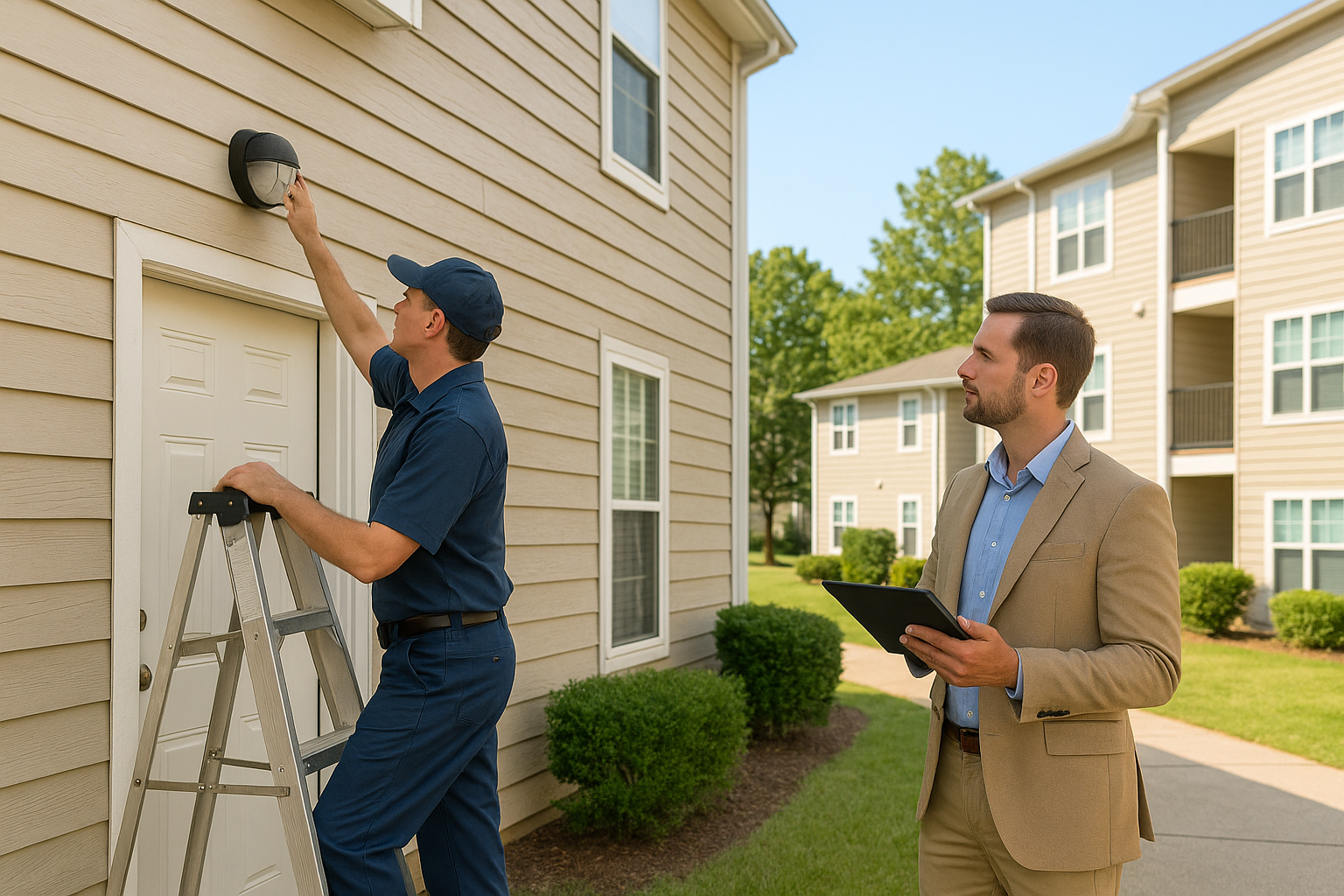Key Takeaways
- Preventive maintenance is the foundation of NSPIRE compliance.
- Consistent checks and documentation prevent major deficiencies.
- Trained teams and organized logs lead to improved inspection scores.
- Partnering with experts ensures long-term funding protection.
Passing a HUD inspection under the new NSPIRE standards isn’t about last-minute repairs — it’s about consistent, preventive care.
NSPIRE focuses where it belongs: on resident health, safety, and functionality. That means even a small, overlooked issue — such as a faulty alarm, a loose handrail, or a leaking pipe — can impact your inspection score and funding.
The solution? A year-round preventive maintenance program that keeps your property inspection-ready every day, not just during audit season.
Why Preventive Maintenance Matters Under NSPIRE
The National Standards for the Physical Inspection of Real Estate (NSPIRE) represent HUD’s biggest overhaul of property inspections in two decades.
Unlike the older REAC model, NSPIRE measures performance based on real-world livability and safety, not just appearance.
For property leaders, this means two things:
- Quick fixes no longer pass — deficiencies are scored by severity, not visibility.
- Maintenance is now proactive, requiring teams to identify and correct hazards before they escalate.
Preventive maintenance does more than protect your score; it reduces emergency costs, safeguards funding, and improves resident satisfaction — the core priorities HUD evaluates.
Common NSPIRE Inspection Failures You Can Prevent
Most NSPIRE deficiencies come down to everyday maintenance issues — the kind that can be avoided with consistent inspections and documentation.
Life-Safety Hazards (24-Hour Repairs)
- Missing or nonfunctional smoke and CO alarms
- Exposed electrical wiring
- Blocked or non-latching fire doors and exits
Health & Habitability Issues
- Mold, water leaks, or moisture buildup
- Poor HVAC ventilation or dirty filters
- Infestations or pest entry points
Property Functionality Deficiencies
- Loose or missing handrails
- Inoperable windows, locks, or doors
- Poor lighting in hallways or stairwells
Takeaway: NSPIRE inspections emphasize prevention. Addressing these small issues on a monthly basis helps avoid costly 24-hour repair mandates later.
See HUD’s official Inspection Preparation Job Aid for more examples.
Building a Year-Round Preventive Maintenance Plan
To stay compliant, create a recurring inspection schedule that aligns with NSPIRE’s three core priorities: health, safety, and functionality.
Monthly Routine Tasks
- Test smoke and CO alarms, GFCI outlets, and emergency lights
- Check for leaks, pest signs, and moisture issues
- Inspect hallways and exits for trip hazards or blocked pathways
Quarterly Walkthroughs
- Perform NSPIRE-style inspections in at least 10% of occupied units
- Review maintenance logs and confirm work order completion
- Re-inspect recurring problem areas such as roofs, HVAC, and plumbing
Annual Comprehensive Review
- Partner with experts for a full-site preventive inspection
- Update your maintenance log and prioritize high-risk repairs
- Budget for upgrades like Affirmative Requirements (e.g., GFCIs, guardrails) before they affect your score in 2026
Takeaway: Regular maintenance prevents emergencies, keeps residents safe, and ensures your team is always HUD-ready.
Documentation: The Secret to a Passing Score
Under NSPIRE, it’s not enough to fix a problem — you must prove it was corrected on time.
HUD requires documentation for all repairs within these deadlines:
- Life-Threatening (LT): 24 hours
- Severe (S): 30 days
- Moderate (M): 60 days
To protect your score, use a digital maintenance log that records every task with dates, before-and-after photos, and invoices.
This log also serves as supporting evidence during re-inspections or appeals.
Leadership insight: If it isn’t documented, HUD considers it unresolved — even if it’s fixed.
Training Your Team for NSPIRE Preventive Maintenance Success
Your property’s inspection readiness depends on how well your team understands NSPIRE’s expectations.
Create a culture of continuous compliance by integrating inspection standards into daily routines.
Training best practices:
- Review new NSPIRE categories and severity definitions with maintenance staff on a quarterly basis.
- Conduct monthly “mini inspections” led by supervisors.
- Include custodial and vendor teams in safety checks.
- Reinforce accountability with mock HUD-style inspections.
When to Call the Experts for Preventive Maintenance
Even the best internal teams benefit from professional guidance.
Partnering with NSPIRE Experts helps your property stay compliant through every inspection cycle.
Our services include:
- Pre-inspection audits aligned with NSPIRE scoring standards
- Custom preventive maintenance schedules
- Staff training and documentation system setup
- Repair verification and readiness reports
By outsourcing your inspection prep, you gain peace of mind — knowing your property meets HUD’s requirements year-round.
Explore our professional NSPIRE maintenance and repair services or schedule a consultation with our NSPIRE team.
Frequently Asked Questions About NSPIRE Preventive Maintenance
Q1: How often should preventive maintenance be performed?
At least monthly for high-risk systems (smoke alarms, electrical, egress) and quarterly for full property walkthroughs.
Q2: What are the most common preventable deficiencies addressed in Preventive Maintenance?
Missing smoke alarms, leaks, blocked exits, and electrical issues account for most failing scores.
Q3: Can preventive maintenance improve our NSPIRE score?
Absolutely — early detection reduces re-inspection risks and helps maintain scores above the 60-point threshold.
Q4: Who should lead maintenance inspections?
The maintenance supervisor or property manager, supported by trained staff and verified by leadership.
Q5: How can we train our team for NSPIRE compliance?
Start with HUD’s guidance, internal mock inspections, and professional audits from NSPIRE Experts.
